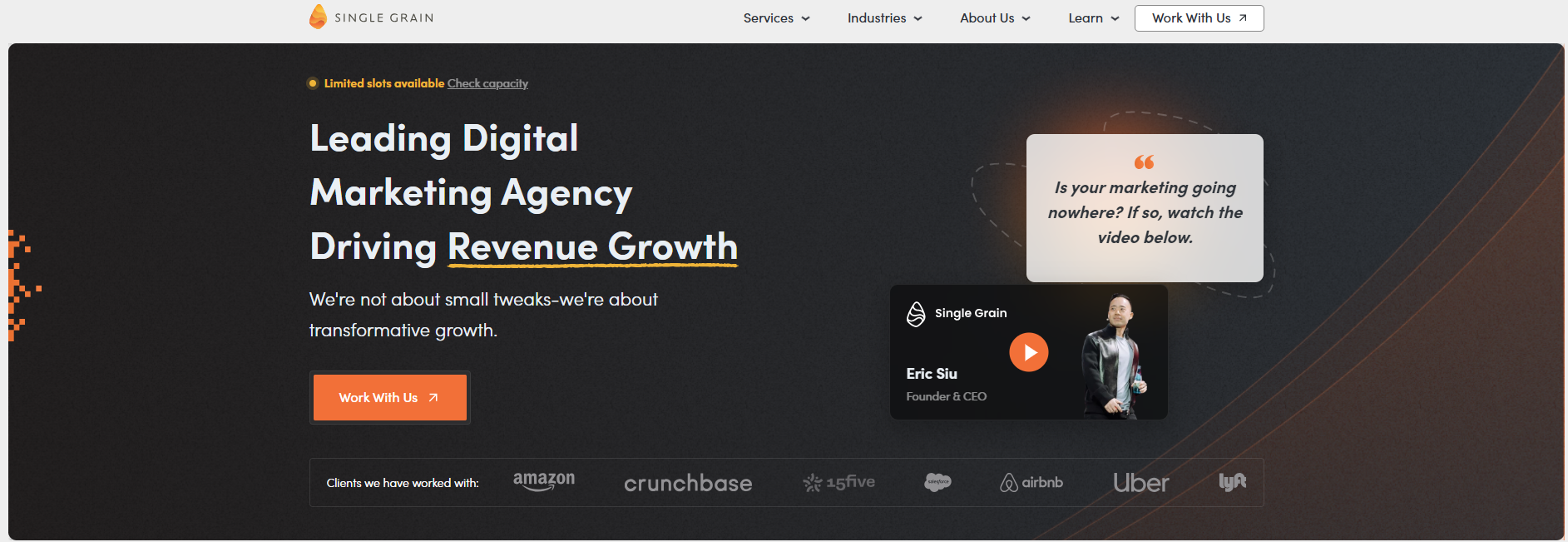How GEO Optimization Improves Your Customer Acquisition
Customer acquisition shifted dramatically when AI-powered search engines began answering user queries directly instead of simply listing websites. According to recent data from Exploding Topics, Google’s AI Overviews appeared in 30% of all search results and 74% of problem-solving queries in January 2025. For growth-stage SaaS companies and B2B brands, this represents both a challenge and an unprecedented opportunity to capture high-intent prospects when they’re seeking solutions.
Traditional SEO strategies that focus solely on ranking web pages are leaving money on the table. While your competitors fight for position #1 in search results, smart marketers are optimizing for something entirely different: inclusion in AI-generated answers. This approach, called Generative Engine Optimization (GEO), directly influences where and how your prospects discover you.
TABLE OF CONTENTS:
- Understanding GEO's Direct Impact on Customer Acquisition
- Performance Gains From AI-Driven GEO
- Real-World GEO Customer Acquisition Success Stories
- Strategic GEO Implementation Framework for Customer Acquisition
- Measuring GEO Customer Acquisition ROI
- Advanced GEO Tactics for SaaS and B2B Customer Acquisition
- Building Competitive Advantage Through GEO in 2025 and Beyond
- Related Video
Understanding GEO’s Direct Impact on Customer Acquisition
Generative Engine Optimization transforms how prospects find and evaluate your business by ensuring your brand appears in AI-generated responses across platforms like ChatGPT, Google’s AI Overviews, Perplexity, and Claude. Unlike traditional search optimization, GEO focuses on becoming the authoritative source that AI engines cite when answering user questions about your industry, solutions, or competitors.
The customer acquisition benefits become clear when you consider user behavior: someone asking “best CRM for growing SaaS companies” expects a comprehensive answer, not a list of websites to research. When AI engines provide that answer and your brand is featured as the recommended solution, you’ve bypassed the entire top-of-funnel research phase and landed directly in the consideration set.
“The shift from link-based search to AI answers fundamentally changes the customer journey. Prospects no longer browse through multiple websites. They trust the AI’s synthesis and focus on the solutions it recommends.”
This behavioral shift explains why companies implementing GEO strategies often see disproportionate improvements in lead quality. When prospects discover you through AI recommendations, they arrive pre-qualified and ready to evaluate solutions, not just gathering information.
Performance Gains From AI-Driven GEO
The evidence supporting GEO’s impact on customer acquisition continues to mount as more businesses adopt AI-powered optimization techniques. 65% of businesses report better SEO performance after adopting AI-powered optimization techniques, with improvements spanning organic visibility, engagement metrics, and conversion rates.
These performance gains translate directly into improvements in customer acquisition through several mechanisms. First, AI-optimized content typically ranks for more long-tail, high-intent queries than traditional keyword-focused content. Second, prospects who discover brands through AI recommendations exhibit higher engagement rates and shorter sales cycles. Third, the authority signals required for AI inclusion often improve overall search visibility across all channels.
| Content Type | Traditional SEO Conversion Rate | GEO-Optimized Conversion Rate | Improvement |
|---|---|---|---|
| White Papers | 2.8% | 4.6% | +64% |
| Case Studies | 2.1% | 3.5% | +67% |
| Landing Pages | 2.0% | 3.1% | +55% |
The structured, authoritative content required for AI inclusion naturally converts visitors into leads and customers.
Real-World GEO Customer Acquisition Success Stories

The theoretical benefits of GEO become tangible when examining actual implementation results across different business models and industries. LS Building Products wanted to expand its SEO strategy beyond traditional search engines. They implemented a comprehensive GEO and AI SEO strategy, resulting in a 67% increase in organic traffic and a 400% increase in traffic value. This demonstrates that GEO doesn’t just increase traffic volume but also attracts higher-quality prospects who convert at higher rates.
Winedeals struggled to maximize conversions from their content strategy. They implemented AI-powered content at scale, achieving a 325% increase in CTRs and 184,000 impressions. Bierman Autism implemented a technical SEO strategy that resulted in major AI SEO and GEO wins. They experienced 21% higher keyword growth and 75% AI Overviews capture.
Strategic GEO Implementation Framework for Customer Acquisition
Successful GEO implementation requires a systematic approach that aligns with your customer acquisition objectives. The most effective framework progresses through four distinct phases, each building upon previous optimizations while maintaining focus on measurable business outcomes.
The assessment phase begins with auditing your current AI visibility across major generative platforms. This involves testing your brand’s appearance in AI responses for target queries, analyzing competitor mentions in AI-generated content, and identifying content gaps where AI engines lack authoritative information about your solutions. Many growth-stage companies discover they’re completely absent from AI responses for their most valuable keywords, representing significant untapped acquisition opportunities.
Strategy development focuses on mapping priority queries to AI engine preferences while ensuring alignment with your customer journey. This means identifying the specific questions prospects ask when evaluating solutions like yours, then creating content that AI engines will confidently cite as authoritative answers. The most effective approach involves developing entity-rich topic clusters that demonstrate comprehensive expertise rather than optimizing individual pages in isolation.
Implementation encompasses technical optimizations, content development, and authority building. Technical elements include comprehensive schema markup, entity relationship mapping, and structured data that helps AI engines understand your business context. Content development prioritizes clear, factual, quotable information that AI engines can extract and synthesize. Authority building involves citation management, thought leadership content, and strategic partnerships that reinforce your expertise signals.
Measuring GEO Customer Acquisition ROI
Traditional marketing metrics provide incomplete pictures of GEO performance because AI-driven traffic behaves differently from organic search visitors. Effective measurement requires tracking both AI-specific visibility metrics and their downstream impact on customer acquisition funnels.
AI visibility metrics include mention frequency in generative responses, position within AI-generated answers, and consistency of brand representation across different AI platforms. These leading indicators predict customer acquisition performance before traditional metrics reflect changes. For example, increased mentions in ChatGPT responses for industry queries often precede improvements in high-intent organic traffic by 30-60 days.
Customer acquisition metrics must account for the unique characteristics of AI-driven prospects. These visitors typically demonstrate higher intent, shorter research cycles, and superior conversion rates, but may interact with your website and content differently. Working with experienced SEO agencies that understand these nuances ensures accurate measurement and optimization of your GEO investments.
Attribution modeling becomes particularly important when prospects discover you through AI recommendations but convert through other channels. Many companies implementing GEO strategies find that AI visibility creates a halo effect, improving performance across paid search, social media, and direct traffic as prospects encounter consistent brand messaging across multiple touchpoints.
Advanced GEO Tactics for SaaS and B2B Customer Acquisition
SaaS and B2B companies can leverage specialized GEO approaches that align with their longer sales cycles and committee-based purchasing decisions. The most effective tactics focus on becoming the authoritative source for category-defining content that influences buying committee research.
Product-led growth companies benefit from optimizing their feature descriptions, use cases, and integration capabilities for AI discovery. When prospects ask AI engines about specific functionality or implementation requirements, your detailed, structured content becomes the foundation for AI recommendations. This approach works particularly well for companies competing in crowded categories, where AI-driven visibility creates significant competitive advantage.
For comprehensive customer acquisition strategies that integrate GEO with other channels, consider exploring multi-channel customer acquisition approaches that amplify your AI visibility investments across all marketing touchpoints.
Building Competitive Advantage Through GEO in 2025 and Beyond
The companies establishing GEO foundations today will enjoy significant competitive advantages as AI-powered search becomes increasingly dominant. Early adopters benefit from establishing authority signals and entity relationships before their markets become saturated with GEO-optimized competitors. The businesses implementing comprehensive GEO strategies now will own the authoritative positions that influence AI recommendations for years to come.
The investment required for effective GEO implementation continues to increase as competition intensifies and AI engines become more sophisticated in evaluating authority signals. Companies waiting to implement GEO risk require significantly higher investments to achieve the same level of visibility that early adopters achieved with more modest efforts.
For growth-stage SaaS and B2B companies, GEO represents more than an optimization tactic—it’s a fundamental shift in how customers discover and evaluate solutions. The brands that master AI-powered customer acquisition will dominate their categories while competitors struggle to maintain visibility in an increasingly AI-mediated marketplace. The question isn’t whether to implement GEO, but how quickly you can establish the authority signals and content foundations that drive sustainable customer acquisition growth.




